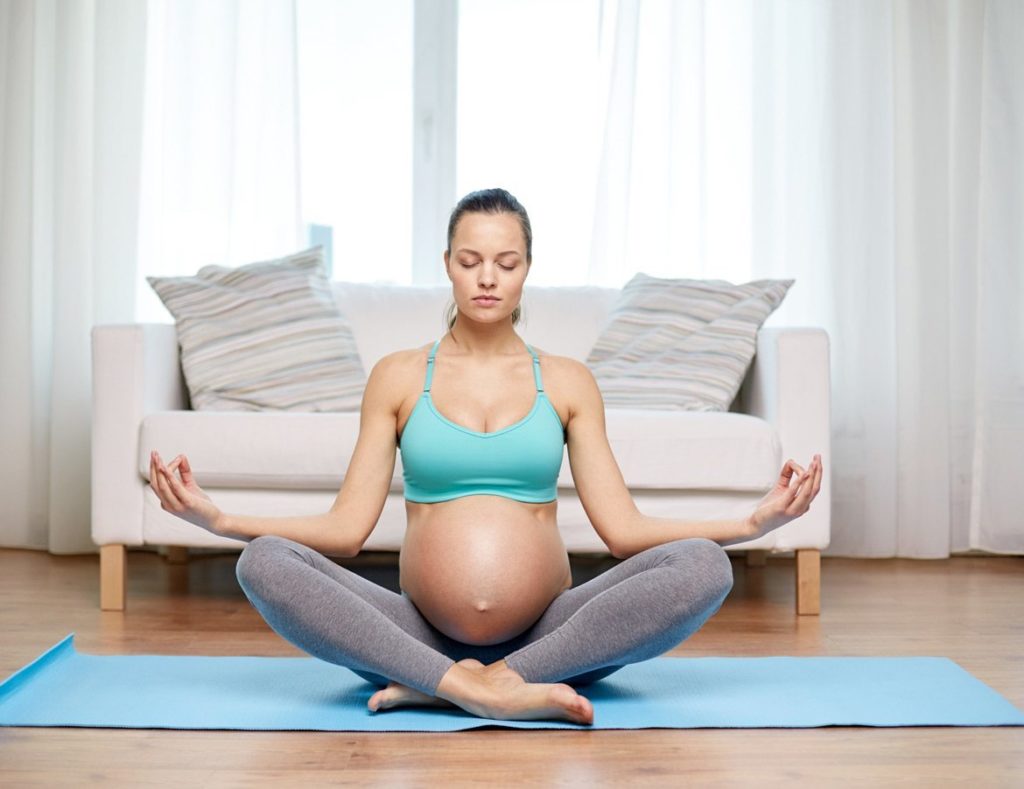
Top 10 Best Yoga Poses for Pregnant Women
Pregnant women who have been practicing yoga before pregnancy surely need to tone it down. And if you haven’t practiced yoga before, you’re probably hesitant to do in this state. You’re watching all those beautiful women bending and doing handstands on Instagram thinking how dangerous they must be. Well, Yoga is dangerous if you go over your limits. If you do it by proper guidance, however, you’ll stay safe and experience immense benefits. Pregnant women should definitely practice yoga; it gives them the mental and physical strength they need. The practice will prepare a pregnant woman to welcome the newcomer to Earth with positive attitude and grace. Following we list the top ten yoga postures for pregnant women to practice.
10 Virabhadrasana II (Warrior II Pose)
This posture looks so simple. Try to take it properly and hold it. You’ll notice it’s not as easy as it seems. If your mind starts wandering around, you’ll lose balance. The pose demands focus and strength of character. The name speaks for itself: it’s a warrior pose. Why is it good for pregnant women? First and foremost, it’s safe. You’re not overbending or overstretching any part of your body. You’re learning how to maintain a balanced and calm mind. Your baby needs that.
Now, here is how to do it:
- Stand with your feet together, legs straight, back straight, arms relaxed next to your body. This is Tadasana (Mountain Pose), and it’s the starting position for Warrior II.
- Take a step to move your feet around 3.5 – 4 feet apart.
- Raise your arms with the palms facing down, keeping them parallel to the floor.
- Turn your left foot 90 degrees to the left, and your right foot slightly to the right. The heels should be in line.
- Bend your left knee over the left ankle, keeping the right leg straight.
- Turn your head to the left. Focus. Breathe!
- Keep the pose for at least 30 seconds. If possible, stay there for a minute. Then, return from the pose and repeat the same steps to the other side. It won’y be easy if you’re a beginner, but with time your muscles will be strengthened and you’ll gain more flexibility and balance.
9 Ardha Uttanasana with Hands on the Wall (Standing Half Forward Bend)
This is not a deep forward bend, so it won’t harm your baby. The pose will lengthen your spine and release the pressure you’re feeling in the back. It will also increase the flexibility in your shoulder and neck area, and that’s exactly where you feel the consequences of stress.
- Stand in Mountain pose, facing the wall.
- Place the palms of your hands on the wall, shoulder-width apart.
- Start stepping away from the wall as you bend forward. Keep the feet hip-width apart. Keep the hands on the wall and your arms straight. Feel how you’re extending the spine.
- Keep the legs straight, too. Relax the hamstrings.
8 Ardha Utthita Parsvakonasana (Half Extended Side Pose)
Trikonasana (Triangle Pose) is great for increasing the flexibility of your inner thighs. However, it may be a bit too challenging for pregnant women who haven’t been practicing yoga before. The Full Extended Side Pose is also challenging. This adjustment makes it pretty accessible even for beginners.
- Start in Mountain Pose.
- Make a step, taking your feet 3.5 – 4 feet apart. Raise your arms and keep them parallel to the floor, with the palms facing down.
- Turn your right foot 90 degrees to the right, and your left foot slightly to the right.
- Bend the right knee over the right ankle.
- Bend the right arm and rest the right elbow over the right knee. Raise the left arm up, forming a straight line with the leg.
- Stay there. When you’re ready to come out of the asana, do the steps in a reverse order. Then, repeat them to the other side.
7 ViparitaKarani (Legs Up the Wall Pose)
This pose will relax your tired legs at the end of the day. When you’re in Viparita Karani, your heart doesn’t have to fight the gravity to bring the blood flow from the legs upwards.
- Bring your mat close to the wall. You’ll have to experiment a bit with the position until you find the right one, so be ready to move the mat around until you find what works for you. To feel more comfortable, you may place a bolster under the lower back.
- Lay sideways on the bolster, with your right hip on it and the buttocks against the wall, and the right arm extended on the floor.
- Roll over on your back, with the feet towards the ceiling. The legs should be resting on the wall.
- Extend your arms to the sides, away from the body. The palms should be facing the ceiling.
- Close your eyes. You don’t have to put in any effort to maintain this pose when you make it comfortable.
- To get out of the pose, roll back to the side.
6 BaddhaKonasana (Bound Angle Pose)
During pregnancy, it’s important to relax and strengthen the muscles of the pelvic floor as much as possible. Scientists proved that improper muscle activation in the pelvic floor during vaginal delivery increases the risk of pelvic floor injuries. You’ll need the relaxation, so you can resist the pain. You’ll need the strength, so you’ll regenerate the function of these muscles after giving birth. Most of all, you’ll need the flexibility, so you’ll make the delivery process easier for your baby. BaddhaKonasana is the perfect asana for gaining those benefits.
- Sit with the back straight and your legs straight in front of you. If you haven’t been practicing before and you can’t keep your back straight in that position, sit on a pillow. That should release the pressure in the lower back.
- Bend your knees, pulling the heels towards your pelvis and dropping the knees to the sides.
- Try to bring the knees as low to the ground as possible while keeping the soles of the feet together. Don’t force it. The pose has to be comfortable.
- Sit. Relax. Breathe. If you feel the tension in the pelvic floor, imagine you’re breathing through that area.
https://www.youtube.com/watch?v=APK40xRvzj0
5 Malasana (Garland Pose)
This one is great for increasing the flexibility of the pelvic floor.
- Stand on your mat, with the feet a bit wider than hip-width apart. The toes should be slightly turned outward. To make the pose easier, you can put a folded blanket under the heels.
- Bring your hands together, close to your heart.
- Bend your knees and start dropping the pelvic floor down. You don’t have to drop the hips lower than the knees if you find it difficult.
- Keep the hands together and use the elbows to open the hips by gently pressuring the knees outwards.
4 Virasana (Hero Pose)
Your legs carry a lot of pressure during pregnancy. That’s why they feel tired and heavy. This pose is great for soothing them. It increases the flexibility in the knees and ankles. You’ll be doing an adjusted version for pregnant women, so you won’t cause pressure to the pelvic floor.
- You’ll need a block to sit on.
- Separate your feet, put the block between them and carefully sit on it.
- Relax your arms, placing the hands on the thighs.
- Keep the shoulders relaxed and the back straight.
- Close your eyes. Breathe! Feel the posture. If there’s any tension in the legs, try to adjust the position to make it more comfortable. It gets really comfy with practice.
3 Pawanmuktasana (Gas Release Pose)
Gas and bloating are common and normal issues during pregnancy. This pose is great for addressing those problems. Pawanmuktasana is done with the knees close towards the chest, pressing the thighs on the abdomen. You can’t do that kind of forward bending in pregnancy. We’ll adjust the pose. You’ll be bringing the legs to the side of the belly, so they won’t be causing pressure on the abdomen.
- Lie on your back with the arms beside your body and the feet apart.
- Bend the right knee and start bringing the leg to the side of the belly. It’s similar to the usual Pawanmuktasana, but you’re aiming the right knee outwards and towards the right armpit instead of directing it towards the chest.
- Grab the right knee with your right hand and press to increase the flexibility of the thigh. Stay there for a moment.
- Release the knee and bring the leg down.
- Do the same thing with your left leg.
- Then, bend both knees, bringing both legs to the sides. Grab each knee and gently press with your hands outwards, trying to push them apart. This should feel very comfortable.
2 Sukhasana (Easy Pose)
The name ‘easy pose’ is misleading. If you’ve never practiced yoga before and you’re not used to sitting with your back straight, it won’t be easy to maintain it. The good news is that it gets better with practice. If you use a pillow to sit on, the pose will be more comfortable. Maintain it for five minutes every day. Your back might hurt at first and you may feel your shoulders getting stiff, but it gets better. Day after day, you’ll notice you’re sitting without effort.
- Sit with your back straight and your legs straight in front of you. Don’t forget the pillow (you may fold a blanket if you find that more comfortable).
- Bend your knees, bring the feet towards the pelvic floor and slip each foot under the opposite knee.
- Relax the shoulders. Keep the neck in line with the spine. If you feel like your posture is dropping as you sit, slowly straighten your back again.
1 Is Yoga All About Postures?
Pranayama, the practice of breathing is an important part of your yoga practice. Make sure to complement your asana practice with proper breathing exercises. When you learn how to control your breath, you’ll be able to use it while giving birth. Relaxation and meditation are also important.
https://www.youtube.com/watch?v=V0SuQemrTM4
Poses to Avoid
Forward bending poses cause pressure to your belly, so you need to avoid them. If you haven’t been practicing yoga before, don’t attempt to do handstands, headstands, and challenging postures. Keep it safe! If you need a clear practice plan to follow, you can hire a writer from Assignment Masters and tell them what you need. They will conduct a research through various resources to identify the poses that are safe to practice, as well as the ones you shouldn’t attempt.
To make your practice complete, we recommend you to find a good teacher and join a course for pregnant women. You can also start following an online course. If you decide to practice in the comfort of your home, make sure to stay safe and do not attempt anything that seems risky.
Guest Write BIO:Hillary Hope is a content writer and a person who practices Yoga on regular basis. She fell in love with the discipline ten years ago and has become a kind of an expert ever since.


















